Mento's May Madness Melange: #4 - A Misbegotten Youth Revisited
By Mento 7 Comments
Today's May Madness is a little closer to my heart than usual. Each of the three games examined today are loving homages to an ubiquitous part of my childhood. We have a game based on an Atari ST/Amiga classic (maybe I should use scare quotes there), we have a game strongly inspired by one of the first computer games I ever played and a game based on a board game I played endlessly with friends (and alone, but not necessarily in a saddo way) in my elementary school years.
Of course, beyond the sappy reasons, there's also some interesting questions to be answered here: how have these throwbacks managed to adapt game blueprints that are close to 25-30 years old to befit the modern gaming era? Is obstinate accuracy to the source material better or worse than modernizing them to be considerably more playable, or can a developer be talented enough to bridge the gap? Can new generations of video game players find something to enjoy in the outdated genres and conventions of old? Can I delay the feature any longer with rhetorical questions? Where did I leave my keys?
Giana Sisters: Twisted Dreams
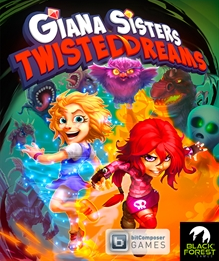
The game: Black Forest Games' Giana Sisters: Twisted Dreams, a traditional 2D platformer.
The source: The Humble Bundle XI.
The pre-amble: Giana Sisters: Twisted Dreams takes its inspiration from a very old Atari ST/Amiga game called The Great Giana Sisters, a shameless Super Mario Bros. clone created for the European computer market. Like that game, the emphasis is on running around collecting gems and avoiding death at all turns. The game does feature a few mechanical additions to keep things interesting: the protagonist, a girl named Giana, can switch between a "cute" version and "punk" version of herself, and each version has a different ability for getting around the world: Cute Giana has a flutter jump, like Yoshi's, while Punk Giana has a dash that works like Sonic the Hedgehog's spin attack. Switching between these two versions of the same character also shifts the world in subtle and less subtle ways, similar to Guacamelee! or Outland.
The playthrough: I gotta say, I'm already liking Twisted Dreams. For one thing, my lack of PC oomph isn't quite a detriment this time around, as the game seems to chug along just fine on its default settings despite some impressively dense graphical work for a lot of its backgrounds. It plays all right too, despite a bit of floatiness to the jumping that makes some of the precision stuff a bit of a chore. Fortunately, it's a game that goes quite easy on you, at least at the offset. While you are sent to the last checkpoint whenever you die, you do get to keep all the collectibles you found and there's no real penalty besides getting a crappier score at the end of the stage. There's always a lot of collectibles, a considerable number of which are well-hidden, and a lot of the fun is in exploring each stage thoroughly for breakable walls and hidden passages. WIth no time limit to worry about, at least for the normal story mode, it's a very methodically-paced game.
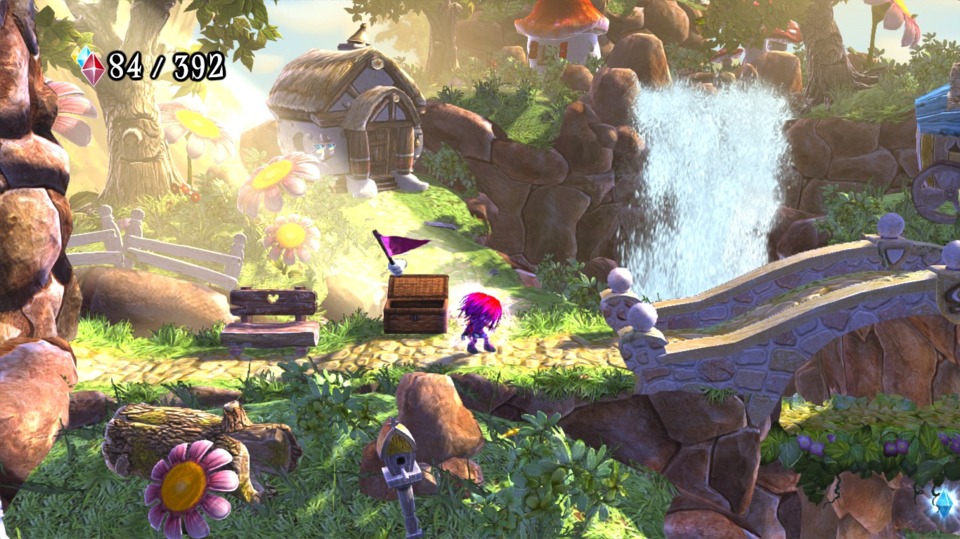
The girls' abilities make for some interesting platformer scenarios, especially when you're required to switch between the two on the fly: Neither of the two versions of Giana can use each other's ability, but if one were to switch in the middle of Cute Giana's flutter jump, Punk Giana would still keep the flutter going for as long as the player keeps the button pressed. Various parts of the topography fall away or reform after a switch, and obstacles vanish and reappear. Many of the game's more clever instances require figuring out the effects of world switching and which version of Giana is better suited for a particular instance. The game helps out in this regard too by creating collectible variants that only one sister can get (yellow gems for Cute, red gems for Punk), and their presence is usually a contextual clue that a particular Giana is required for the next platforming puzzle. It's hardly incredibly complex stuff, but for a platformer that hearkens back to the figurative Bronze Age of games it's more than sufficient as a device to keep things interesting.
I especially like the look of the two worlds: a sinister one for Cute Giana and a bright and colorful one for Punk Giana, which I'm guessing is the world shifting to a nightmare version for whomever is in control (I figure Punk Giana is not all that into fluffy owl monsters and happy sunshine). It's impressive how the worlds morph into one another between each switch, as you see radiant flowers transform into venomous mushrooms and vice versa via some very convincing tween animations. Likewise, benches become coffins, and skulls and bones become shrubs and tree branches. It's a neat effect that applies to almost every piece of the game's busy background to some degree. The music follows a similar suit: it's gentle and melodic for Cute Giana, but then rocking guitar riffs come out of nowhere for Punk Giana (and is largely the reason I spend most of my time as her when possible).
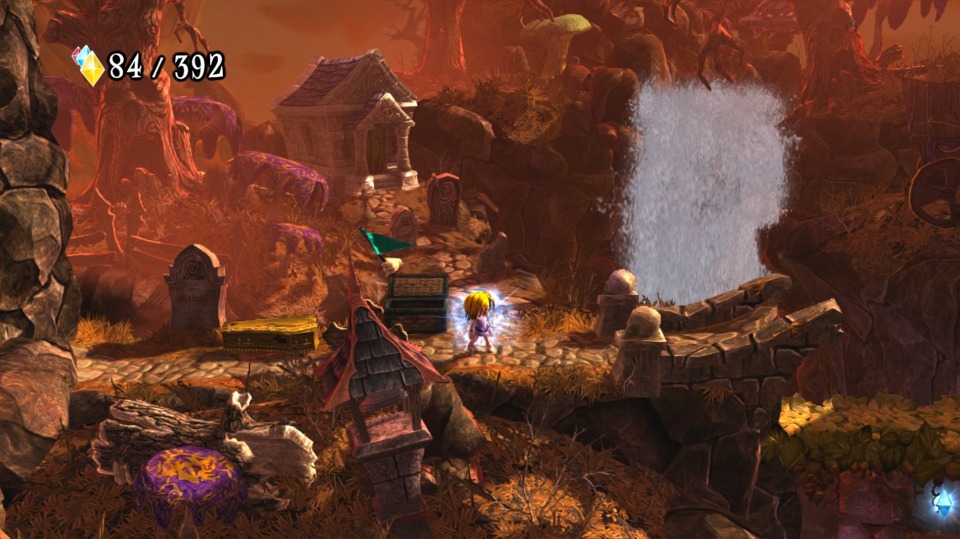
So far, up until the end of World 1, it's been breezy fun. Yet... I don't doubt that it's all primed to pull the rug out from under my feet and start getting serious. Serious about rug-pulling.
The verdict: Yeah, I'm liking it. Certainly a lot more fun than Mutant Mudds at least. I don't have to worry about grabbing all the sparklies again if I die, which is a relief and a major frustration reliever.
Legend of Grimrock
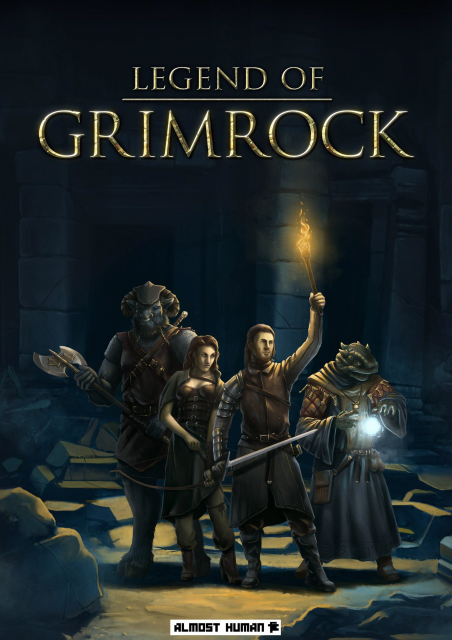
The game: Almost Human's Legend of Grimrock, a throwback first-person dungeoncrawler RPG.
The source: Humble Indie Bundle 7
The pre-amble: Legend of Grimrock is a throwback dungeoncrawler RPG that tasks players with escaping an immense mountain full of traps and monsters to the exit far below. The player can take four stalwart adventurers, either pre-generated or created from scratch, and attempt to take on the dungeon's challenge. As with the many old games it homages, such as Dungeon Master, most of the difficulties the player will face lie in figuring out the game's diabolical traps and puzzles, more so than hacking and slashing their way through the legions of monsters.
The playthrough: Legend of Grimrock takes painstaking steps through the archives of old dungeoncrawlers of lore to create a game that not only brings out the best in those venerable corridor runners but merges it with a whole host of modern ideas and design advancements. The resulting game seems to be a masterful bridge between old and new, alleviating or diminishing many of the more troublesome and archaic features of the hoary genre while keeping the heart and soul of what made those games so appealing intact. It's a pretty impressive example of taking something old and modernizing it in a way that doesn't end up disappointing the old fans of the Dungeon Masters and Eye of the Beholders of the late 80s/early 90s, nor does it alienate a new generation of RPG players willing to take a chance on it.
I'm quite enamored with the game so far. It takes everything good about Dungeon Master, one of my old favorites, and de-emphasizes the few aspects of that game that have become horribly aged in the 27 year interim. You still have to eat to survive, but food is plentiful and hunger meters move very gradually. You kill things for experience to level up, rather than the bothersome task of simply practicing your skills over and over until they eventually increase. The adventurers' health regenerates slowly so there's no need to sleep it off in non-hostile areas, but the option's there if you're into the idea. There's a big crystal every now and again that resurrects fallen party members and heals everyone. There's a map feature (Thank Lord Chaos! And take that Etrian Odyssey. You fixated on the wrong damn thing) but you can turn it off if you want a more "traditional" experience. It's a game that keenly knows its audience, but isn't so niche as to potentially exclude anyone not already familiar with this type of sub-genre.
I'm currently on the third floor, getting wrecked by arachnida. The game's started to produce some tough monsters, but I'm glad to see my old system of kiting and circling an enemy is as effective as ever; more so, as enemies now have to take a moment to turn around and focus on you, providing more opportunities to get a few hits in. Heck, running around the dragon in Dungeon Master and stabbing it in the arse repeatedly is how I managed to beat that game in the end, even if I did have to bribe the bards to keep the finer details of that battle out of their ballads. The game's got a pleasing focus on finding secrets as well, giving you a little jingle and some powerful gear if you're attentive enough. Looking at walls for misshapen rock buttons was how I spent a lot of my pre-teen years on the Atari ST, alongside evading space pirates in Elite and tolerating godawful Arcade brawler ports.
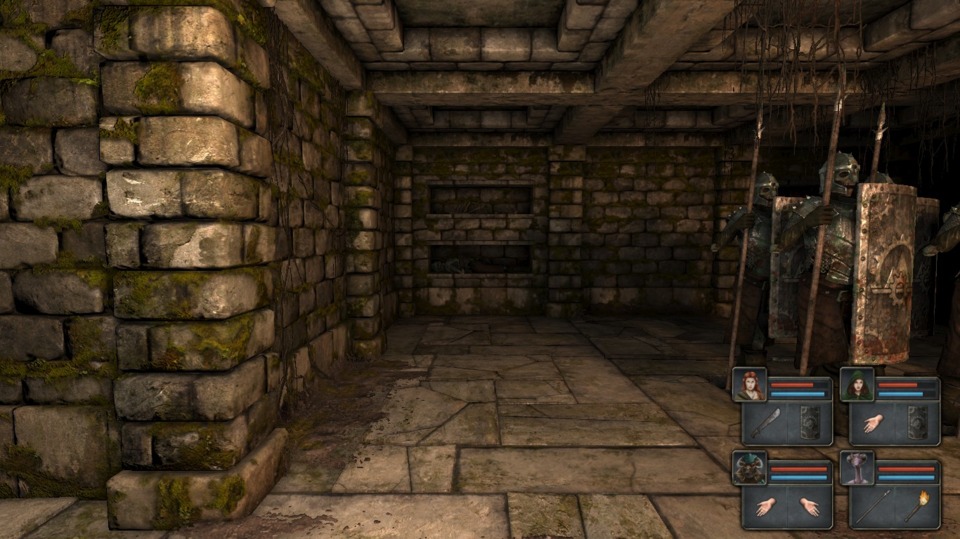
The verdict: I figured Toki Tori 2 would be the one game I'd immediately jump right back into once May Madness is over. It won't be. It'll be this. (And on a semi-related note, if anyone's already a big fan of Grimrock, might I suggest checking out my Dungeon Master Brief Jaunt to marvel at the similarities between the two games? It seriously impressed me how well Almost Human nailed the same feel.)
Talisman: Prologue
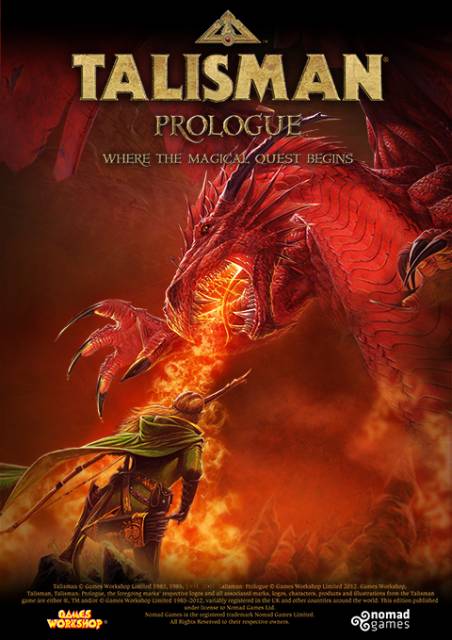
The game: Nomad Games' Talisman: Prologue is a video game adaptation of the venerable Games Workshop (they of Warhammer 40k fame) board game, which plays like a cross between HeroQuest and Monopoly. It's... a little weird, I'll get into it more in the pre-amble.
The source: The Indie Royale Pancake Bundle.
The pre-amble: Talisman's an adaptation of a board game, but this particular Prologue version is only one-player. The game is built in such a way, like HeroQuest, that a single player can play by themselves but... I dunno, it doesn't really seem like in the spirit of a board game. But a single-player video game RPG based on a board game? That I don't feel quite so pathetic about.
The goal of Talisman is to walk around a cyclical board (well, it's a square, but the spaces are arranged like Monopoly in that you go around the board a lot) activating adventure cards, and completing the quests the game assigns you. These adventure cards can be anything: gold, objects like weapons and armor, followers, events or, most likely, a monster to fight. The player has stats depending on their class: Warriors have more Strength and can roll two dice when attacking and keep the highest, for instance, and there's a whole bunch of others that range from leprechauns, minotaurs (sensing a theme with playable minotaurs of late), amazons, druids and vampire hunters that all begin with different stats and abilities. Defeating monsters allows you to increase your parameters, making future battles easier, and collecting objects and followers greatly increases your chances of survival.
The playthrough: So Talisman's one of the board games I used to play excessively as a child, along with HeroQuest and Kings & Things: they were basic board game variants of the sort of RPGs I enjoy today, and were surprisingly replayable with the amount of permutations you could potentially create in any one game. Because it was originally made in the 80s it's not particularly complex, not like the board games of today, and about on par with one of those Choose Your Own Adventure books that required you keep track of your stats. As such, this video game adaptation had no problem getting it as close to the real thing as possible.
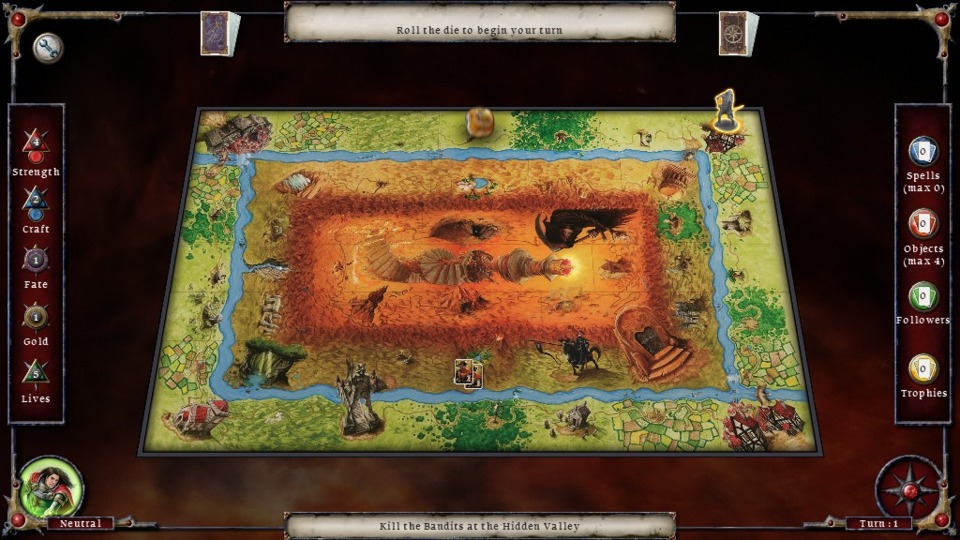
It also gives a few of the more beginner-friendly classes a few bonus quests to perform, whereas in the real game the only goal is to reach the Crown of Command in the center of the board. Each area of the board, from the green outer circle to the sandy middle circle to the Mordor-esque inner "Plains of Peril" circle, get increasingly harder to breach and harder still to survive once in there. The player has some freedom by selecting which direction around the current level they wish to move (or to move out of the current circle where applicable), so if there's some bad news in one direction it's probably best to go the other way, even if it moves you further away from your goal. Killing monsters, finding items and recruiting friendly NPCs all gradually increase your power, and this is how you eventually grow strong enough to make it towards the center of the board. Ideally, you want to balance roaming around a bit for a few upgrades with getting to the center as quickly as possible: in the real board game, this is because you want to beat your opponents to the center square but in the video game, you get awarded bonus points on how quickly you complete each quest.
Because of how this board game is set up, it's entirely playable on your own, but more fun with others competing against you. Players leave hazardous (and occasionally beneficial) adventure cards behind wherever they go, and resources dry up fast as everyone chases them down. Certain tiles require that you roll and suffer the consequences, from lost health to lost turns. Because everything is decided with dice rolls, it can seem a bit arbitrary and unfair at times, but not in a way that can really be blamed on the game. If a quest is too hard, it's more likely you were just unfortunate with the rolls that time. There's something to be said for how luck-based gameplay isn't the most compelling variant out there, but at least there's never any guarantee that it will always kick your ass. I got turned into a toad on the last game I played, which turned out to be a death sentence given how weak and unprotected (and divorced from one's items) the toad form is, but I don't suspect something that unfortunate will befall me on the following playthrough.
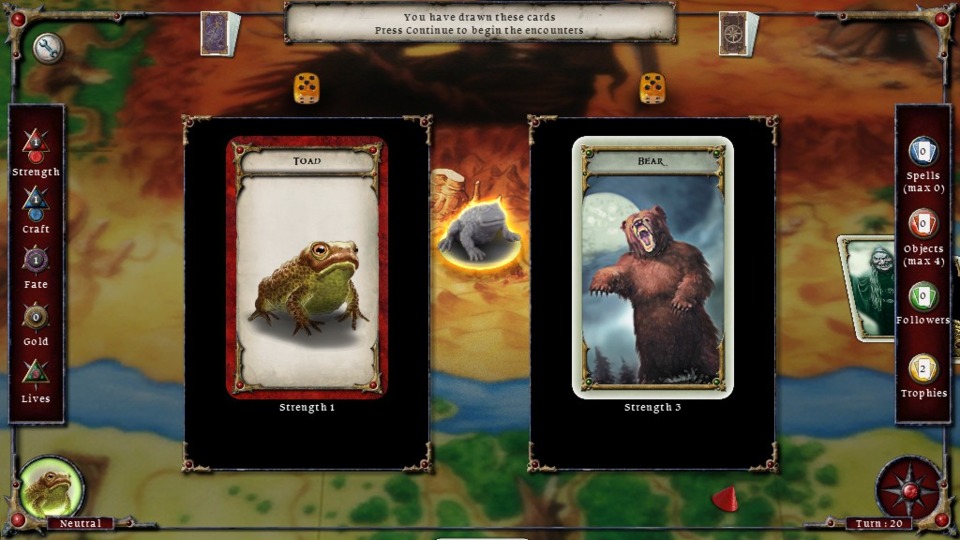
As for the quality of the adaptation, it'd be hard to mess up a game as straightforward as Talisman, and Nomad Games certainly haven't. For better or worse they have perfectly recreated a 1983 board game, from its pieces and cards to its sense of fair play and adventure. The Prologue variant doesn't allow for multiplayer, sadly, but future versions of the game will. Though the enjoyment is greatly diminished without the multiplayer element, you could still feasibly get a lot of fun out of Talisman if you like your RPGs basic and short, and occasionally brutally unfair due to a number of uncontrollable misfortunes. Given everyone's recent proclivity towards roguelikes, perhaps this was a seredipitous time for this relatively ancient board game to finally see a video game adaptation.
The verdict: I probably won't play much more of Talisman, as it's kind of basic compared to other video games I want to get around to. Then again, these bite-size adventures only take around 15-30 minutes, so I might just keep it around for those time-restricted occasions. For that reason I might recommend trying the iOS/Android version.
The Moment of Truth
The clear winner of today's trio is Legend of Grimrock, but I can say I was pleasantly surprised by all three. You might call confirmation bias considering today's topic is about games based on games I used to love, but there's no telling how well any old game has aged nor how well a modern game has adapted their archaic mores for a contemporary audience. I feel safe in saying that all three of these games are successful in that regard to varying degrees.
